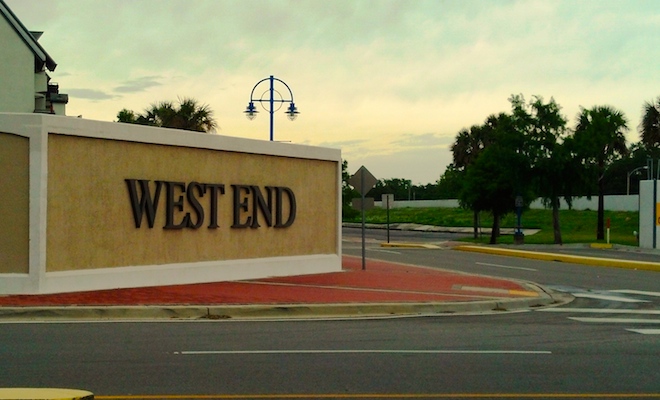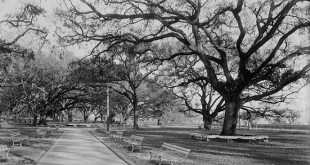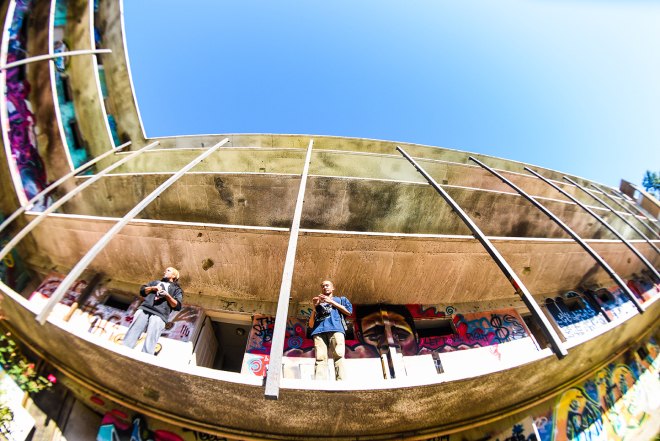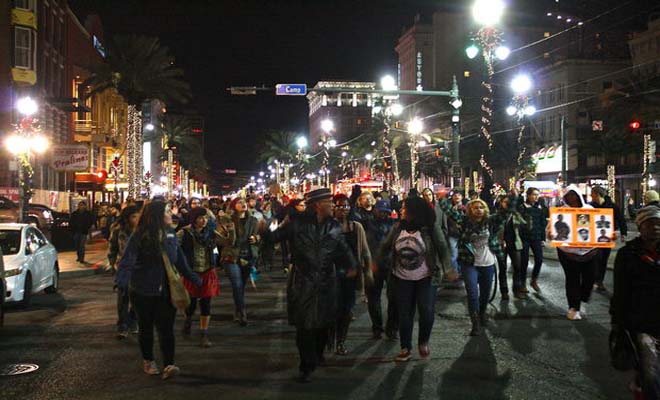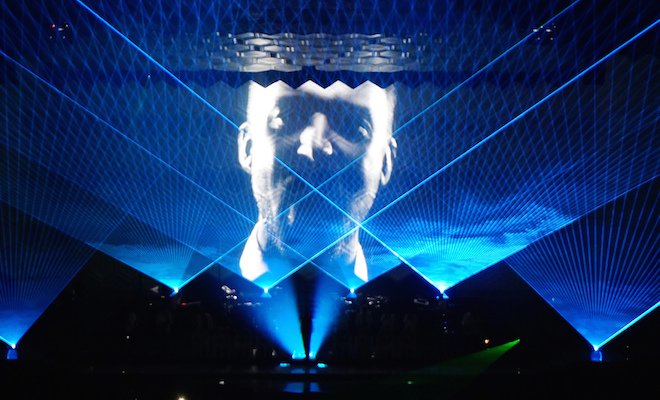I usually don’t start conversations off with the fact that I used to be employed by a gas station. If I do let that unfortunate fact slip, however, I make sure to mention that I worked at a different kind of gas station than you might be used to. I worked at a gas station for boats. We typically catered to small fishing vessels, but occasionally large yachts and sailing crews would pull up to Schubert’s Marine Fuel and Bait dock. Some bought beer, others fuel, and some bought live shrimp before the sun peeked above the horizon for a day of fishing the murky grayish-brown waters of Lake Pontchartrain.

Others would sit and drink beer in my small 10×10 store. I worked alone and didn’t really have the option of hiding behind my coworkers or a tall counter, so I listened. I listened to men with fiberglass shards from their boatyard jobs stuck in their grey beards stutter about the good days of what is called West End.
One morning around nine o’clock, we were empty – as usual. All of the boats fuel up around sunrise to ensure a full day on the water. A tall, dark skinned man came into my store panting and asking for a bottle of water.
James was from London, and had just jogged the seven miles from the Louis Armstrong Jazz Festival to West End Park, right outside of Lakeview.
“Is this West End Park? I’ve been looking for hours,” he asked.
“Yes, but not a very historic place to look for if you’re from out of town,” I said.
“On the contrary, one of the most famous jazz songs of the 20s was written about this place, played by Satchmo himself. West End Blues!”
 He was right. Where I worked, where I assumed only a few boating businesses and a Yacht Club stood, had a vibrant history dating back to the mid 1800s. Where my sad little gas station for boats stood was once a resort town for New Orleanians to escape the heat, catch a band, get a drink, and watch the golden sunset while a cool lake breeze rustled the leaves on the massive oak trees in the park.
He was right. Where I worked, where I assumed only a few boating businesses and a Yacht Club stood, had a vibrant history dating back to the mid 1800s. Where my sad little gas station for boats stood was once a resort town for New Orleanians to escape the heat, catch a band, get a drink, and watch the golden sunset while a cool lake breeze rustled the leaves on the massive oak trees in the park.
The West End neighborhood is located on the south side of Lake Pontchartrain. Adjacent to the waterfront borough is Lakeview to the east, and Jefferson Parish’s Bucktown neighborhood to the west.
A quick drive down I-10 from downtown New Orleans will put you on Pontchartrain Boulevard, a long stretch of wide road lined with houses sporting such a 50s vibe, you’d feel the urge to jump into a bomb shelter.
Conveniently, there is a bomb shelter on the south side of West End. This area bleeds Red Scare, as Lakeview was one of the first suburban sprawls New Orleans experienced back after WWII. But that’s a story for another time.
North of the bomb shelter, West End was originally constructed as a world-famous resort built around the mid-1800s called New Lake End.
 Prior to this time, the land on the Orleans Parish shore of the lake was mostly swamp. It occasionally had a little touch of civilization hanging over the water like branches of the bald cypress tree commonly found around the area.
Prior to this time, the land on the Orleans Parish shore of the lake was mostly swamp. It occasionally had a little touch of civilization hanging over the water like branches of the bald cypress tree commonly found around the area.
New Basin Canal, a commercial highway into the city, and the now famous lighthouse were constructed in those early years.
Resort communities build up along where this new canal met the lake. A streetcar line branching off the Canal Street line was built to what was now a popular getaway for locals.
 These primitive resort towns included boardwalks, hotels, on-the-water dining and live music rivaling today’s sprawling beachfront getaways. Years later, in the 1920s, a majority of the existing swamp area was filled in by a massive WPA project, creating what is today West End Park and the oak lined drive leading to the docks.
These primitive resort towns included boardwalks, hotels, on-the-water dining and live music rivaling today’s sprawling beachfront getaways. Years later, in the 1920s, a majority of the existing swamp area was filled in by a massive WPA project, creating what is today West End Park and the oak lined drive leading to the docks.
Throughout the 20th century, West End was home to a thriving marine business and seafood restaurant community. Restaurants such as Bruning’s, open since 1859, and Fitzgerald’s have sustained generations of hungry patrons eager for some greasy fried shrimp and a cold Jax beer. Marinas and yacht clubs and boating supply outlets lined the park’s scenic drive in the front where dark harbor water lapped at their back doors.
For years, these local favorites proudly flaunted the aura of seaworthy folk relaxing and escaping the city life, through hurricanes, depressions, and world wars. Good things, however, rarely last.
On August 29, 2005, the most devastating hurricane to hit the Gulf Coast stuck southeastern Louisiana. Hurricane Katrina rustled a little more than sails around the marina. Businesses and homes with more than a century under their belt no longer existed. Not only as businesses, but the actual structures of some of these places were completely gone.

It took a little more than seven years, but the West End is rehabilitating. Business has come back, the park has been cleaned up, and old places rebuilt. It’s a long way to go, but the West End today is nothing like the West End of yesteryear.
Today, West End is home to two yacht clubs, Southern Yacht Club, and the smaller New Orleans Yacht Club. I grew up sailing at Southern, but the main club burned down in the wake of Katrina. Finished in 2009, the new club building is the light at the end of the gloomy tunnel that is post-Katrina West End. New Orleans’ finest can be found here precisely at sunset on any given day sipping on a dark and stormy cocktail, sitting on the patio with a cigar and talking corrupt (sometimes) politics.
 Southern Yacht Club is the Ivy League of clubs. Though rebuilt, the club itself boasts its status as the second oldest yacht club in America. World famous races have been hosted there since 1849, and despite being destroyed by Katrina, the large membership of old New Orleans money helped save the club. The new clubhouse is a four-story white-walled building resembling an oversized lighthouse. The fourth floor bar serves only the finest from bow-tied servants catering to your every whim. Most patrons don’t pay with cash, but rather a membership number. Swanky.
Southern Yacht Club is the Ivy League of clubs. Though rebuilt, the club itself boasts its status as the second oldest yacht club in America. World famous races have been hosted there since 1849, and despite being destroyed by Katrina, the large membership of old New Orleans money helped save the club. The new clubhouse is a four-story white-walled building resembling an oversized lighthouse. The fourth floor bar serves only the finest from bow-tied servants catering to your every whim. Most patrons don’t pay with cash, but rather a membership number. Swanky.
New Orleans Yacht Club, at the other side of the harbor, is a different story. The clubhouse looks almost like a submarine. Dark blue on the outside and stained wood on the inside, the windows this place has resemble portholes salvaged off old ships. The bar is more utilized, and is lit with dark, orange lights. It smells like seawater and rum. Still, though, New Orleans Yacht Club is respected for hosting many races catering to those with the passion for sailing that don’t have pockets as deep as their neighbors.
“Growing up around Southern you got to see a lot of different people,” my dad, who grew up around West End, says.
“You’ll see all kinds of people, that’s what made it so unique. You’ll see old salty sailor types and shrimpers to the New Orleans blue bloods at Southern.”
To contrast the blue blood types at Southern Yacht Club, pops recalls an old friend named Jerry.
 Jerry came from less money but had the same passion for sailing as Glenn. Whereas the monetary differences between the two clubs were obvious, both loved to sail and to drink. Jerry liked his rum so much, that he would spend the majority of his paycheck at the New Orleans Yacht Club bar. His wife wasn’t too appreciative of that, so he Macgyvered a hammock made of an old spinnaker sail hanging from the lofts of one of the old boathouses. It wasn’t uncommon to find Jerry the next day hanging up there naked and nursing a bottle of rum.
Jerry came from less money but had the same passion for sailing as Glenn. Whereas the monetary differences between the two clubs were obvious, both loved to sail and to drink. Jerry liked his rum so much, that he would spend the majority of his paycheck at the New Orleans Yacht Club bar. His wife wasn’t too appreciative of that, so he Macgyvered a hammock made of an old spinnaker sail hanging from the lofts of one of the old boathouses. It wasn’t uncommon to find Jerry the next day hanging up there naked and nursing a bottle of rum.
Protecting both the yacht clubs is a concrete jetty reaching eastward out into the lake. “The Point,” as it’s often called, offers great fishing and even greater storm watching. If the weather is just right, and a storm rolls in with a northern wind, cars line up to the waters edge. Every minute or so, ten to fifteen foot waves crash over the rocks and cascade onto the parked cars with passengers joyfully waiting inside.
On the other side of the New Basin Canal is the building that, pre-Katrina, was the chain restaurant Joe’s Crab Shack. I have a lot of memories docking our boat there and getting some food or pelting the outdoor diners with water balloons launched across the harbor by me and my fellow sailing campers at Southern.
The hardest thing to describe about the West End is the atmosphere. “It feels like a New England fishing village meets Southern class meets salty 60s sailors,” says dad. And that’s just what I like about it.
For those looking for a different side of New Orleans, a cocktail, and a cool lake breeze, mosey on over to the West End. Head out on the water, take a sail, take a sip, and travel back in time.
Do you know the history behind New Orleans favorite spots? Tell us about it in our Comments Section.
